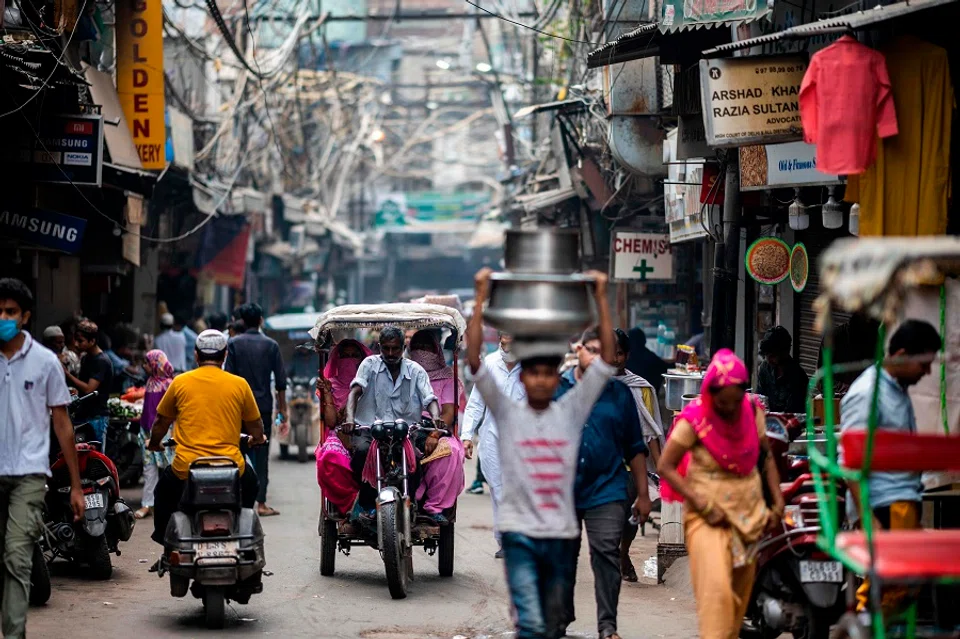Hostile ties with China make it impossible for India to return to RCEP
Without India, the Regional Comprehensive Economic Partnership (RCEP) stops short of being a regional construct for the Indo-Pacific, says ISAS academic Amitendu Palit. However, India is unlikely to reconsider its decision in the foreseeable future because of its worsening relations with China. While China has expressed its interest to be part of the Comprehensive and Progressive Trans Pacific Partnership (CPTPP), might India's domestic concerns lead it to miss the boat once again, to its own detriment?

The world's largest free trade agreement, the Regional Comprehensive Economic Partnership (RCEP), accounting for a third of the global GDP, and population, was concluded and signed by the negotiating members on 15 November 2020. Apart from the ten Southeast Asian economies in the ASEAN bloc, the agreement includes five Asia-Pacific economies that have existing trade deals with ASEAN: Australia, China, Japan, South Korea and New Zealand. India - the other country with a bilateral trade agreement with ASEAN - decided to opt out of RCEP.
RCEP - a new Asian order?
The RCEP was concluded nearly a decade after it's conception at the ASEAN Summit in Bali in November 2011. The agreement is significant for several reasons.
Notwithstanding India's exit, the RCEP remains the world's largest regional trade agreement. Outside of the multilateral rules-based trade regime of the WTO, the RCEP will be the largest preferential trading bloc. The successful conclusion of the agreement underlines the extension of the ASEAN-centric trade framework in the Asia-Pacific, by bringing ASEAN, and all of its bilateral trade partners, except India, within the scope of a common set of preferential trade rules.
For the rest of the world, RCEP is a strong signal against inward-looking protective tendencies.

The RCEP has been concluded at a time, when the Asian region, and almost all RCEP members, are experiencing severe economic contractions, due to the impact of the Covid-19 pandemic. It is noteworthy that the economic hardships did not prevent the negotiating members from proceeding on the deal. This clearly reflects the region's confidence in greater trade liberalisation for recovering from the current economic setback and long-term benefits. For the rest of the world, RCEP is a strong signal against inward-looking protective tendencies.
What India's absence means
There is, however, disappointment over India's absence. India's presence in the RCEP would have further increased the latter's economic size and allowed the agreement to extend to South Asia. The trade compact, as a result, would have been geographically wider and representative of a larger part of the Asian continent.
Without India, RCEP stops short of being a regional construct for the Indo-Pacific.
From both geopolitical and geo-economic perspectives, Asia today is being increasingly looked at through the prism of the Indo-Pacific, a vision combining the strategic spaces of the Pacific and Indian Oceans. India is one of the most prominent countries of the Indo-Pacific vision. Without India, RCEP stops short of being a regional construct for the Indo-Pacific. Indeed, from a business perspective, India's inclusion in the RCEP would have enabled easier expansion and consolidation of industrial value chains across the Indo-Pacific by extending the common rules of origin to one of its largest economies.
Why India left RCEP
India withdrew from the RCEP at the ASEAN Summit in November 2019. Since then, while the rest of the members wanted India to return to the deal, India didn't and is unlikely to reconsider its decision in the foreseeable future.

The primary reason for India dropping out of RCEP was its discomfort in being part of a trade agreement with China. Domestically, there is strong opposition in India to the further dismantling of trade barriers through a trade deal that will allow more market access to imports. Several of the latter, mostly from China, and partly from ASEAN, are seen to have jeopardised the economic prospects of Indian producers on account of their being cheaper than the local counterparts. These protective and inward-looking sentiments saw Indian industry vociferously opposing joining the RCEP.
The concern of being swamped by cheap imports was reinforced by the discomfort of coexisting in a trade agreement with China, India's largest neighbour, with whom it's relations have become more estranged in recent years. In the months following India's exit from RCEP in November 2019, India-China relations have worsened by an unprecedented extent, following border clashes and loss of lives in June 2020. India has enhanced scrutiny on incoming Chinese investments and prohibited several Chinese apps from being available in the country. It is also working with the US, Japan and Australia in formalising the 'Quad' - a regional defence framework for counterbalancing China. India, Japan and Australia are also involved in the Resilient Supply Chain Initiative for reshoring supply chains out of China. India's current hostile ties with China make it impossible for it to return to RCEP.
The CPTPP and India's options
China's pre-eminence in the RCEP - as its largest member and most powerful economy - is undisputed. This has resulted in the impression that China will exert significant influence in crafting the rules of trade in the region through the RCEP.

The US, under President-elect Joe Biden, might decide to offset such influence of China by joining the Comprehensive and Progressive Trans Pacific Partnership (CPTPP). The CPTPP, which includes several major US allies like Japan, Australia, Canada, and Vietnam, would greatly expand in size and strategic influence upon the US joining it. The CPTPP might then become the template for an Indo-Pacific framework for counterbalancing China.
By not joining RCEP, India has surrendered the opportunity of integrating its economy closer with the Asia-Pacific region.
Might India join the CPTPP? While geopolitically it would be inclined to, economically, it might find it difficult. The CPTPP has more rigorous rules and standards than the RCEP. India would be required to make major changes in domestic regulations on intellectual property management, data governance, investment disputes, and environmental standards in order to join the CPTPP. These would be difficult for India both from a regulatory standpoint, as well as domestic political perspectives.
However, staying out of the CPTPP, or any other economic framework aiming to integrate the Indo-Pacific, would be costly for India. By not joining RCEP, India has surrendered the opportunity of integrating its economy closer with the Asia-Pacific region. If it stays out of an alternative Indo-Pacific trade framework, it might face the prospect of disconnecting from major Indo-Pacific economies. The economic and geopolitical loss could be significant.
Related: RCEP: The start of a new 'China-centric' order? | China's true intentions in wanting to join the CPTPP | India gets ready for shifts in US-China relations under Biden | Asia's flashpoint is the disputed India-China border, not Taiwan Strait | Containing China: Will the Quad become an Asian mini-NATO? | The overstatement of the RCEP



![[Photos] Fact versus fiction: The portrayal of WWII anti-Japanese martyrs in Taiwan](https://cassette.sphdigital.com.sg/image/thinkchina/3494f8bd481870f7c65b881fd21a3fd733f573f23232376e39c532a2c7593cbc)

